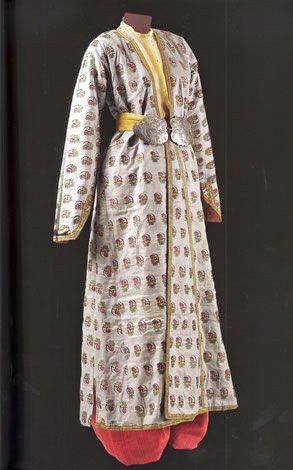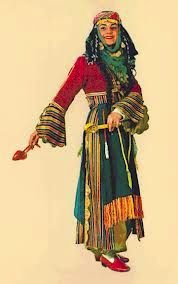Oxygen model in chemistry lab.
led light on the license Plate of the motorcycle
Design in Global Culture
Tuesday, April 28, 2015
Monday, April 27, 2015
Personal Reflection
10 things I learned from this class:
1. leaned the concepts, which are related to my major.
2. gain experience for working in group.
3. become more confident and comfortable to present in class than before
4. have a chance to try new food.
ex: Indian, Thailand, Turkey, Mongolian, Chinese and so forth.
5. Learn everything about the city - Istanbul, Turkey.
6. Give me a chance to travel many famous city through the Internet and classmates' presentation.
7. be come more creative by red dots project
8. Learn the way following the schedule, start from the general to particular, and open my eyes to think of the concepts.
9. Learn about new culture, and differences between each culture
10. Learn the way other people present.
1. leaned the concepts, which are related to my major.
2. gain experience for working in group.
3. become more confident and comfortable to present in class than before
4. have a chance to try new food.
ex: Indian, Thailand, Turkey, Mongolian, Chinese and so forth.
5. Learn everything about the city - Istanbul, Turkey.
6. Give me a chance to travel many famous city through the Internet and classmates' presentation.
7. be come more creative by red dots project
8. Learn the way following the schedule, start from the general to particular, and open my eyes to think of the concepts.
9. Learn about new culture, and differences between each culture
10. Learn the way other people present.
Challenges of Place
Gender Inequality:
For many years the position of women in society has improved gradually
The inequality of the genders in the educational field directly affects the opportunities for the employment of women.
there are still inequalities between women and men, and also between women from different sectors of society, in accessing important development sources, such as education, health and employment.
< http://www.turkishculture.org/lifestyles/turkish-culture-portal/the-women/woman-and-society-317.htm?type=1>
In my view, there are some challenges:
Language: Turkish is the official language in Turkey.
only 17% turkish people can speak English.
Turkish Cuisine - I do not like that much, not delicious to me
Religion: Islam is the largest religion of Turkey with 99.8% of the population being registered as Muslim, while other sources give a little lower estimate of 96.4%. Most Muslims in Turkey are Sunnis forming about 72%, and Alevis belonging to Shia denomination form about 25% of the Muslim population
women have to wear headscarf every where, specially in the public places
Women wear closed clothes, the same applies to visitors - people in open clothing may by denied to enter many mosque and public institution.
For many years the position of women in society has improved gradually
there are still inequalities between women and men, and also between women from different sectors of society, in accessing important development sources, such as education, health and employment.
< http://www.turkishculture.org/lifestyles/turkish-culture-portal/the-women/woman-and-society-317.htm?type=1>
In my view, there are some challenges:
Language: Turkish is the official language in Turkey.
only 17% turkish people can speak English.
Turkish Cuisine - I do not like that much, not delicious to me
Religion: Islam is the largest religion of Turkey with 99.8% of the population being registered as Muslim, while other sources give a little lower estimate of 96.4%. Most Muslims in Turkey are Sunnis forming about 72%, and Alevis belonging to Shia denomination form about 25% of the Muslim population
Women wear closed clothes, the same applies to visitors - people in open clothing may by denied to enter many mosque and public institution.
Monday, April 20, 2015
Sunday, April 19, 2015
Powers of Influence
Turkish
Culture is unique in the world in that it has influenced and has been
influenced in return by cultures and civilizations from China to Vienna and
from Russian steps to North Africa for over a millennia. Turkish culture
reflects this unparalleled cultural richness and diversity, and remains mostly
shaped by its deep roots in Middle East, Anatolia and Balkans, the cradle of
many civilizations for at least twelve thousand years.
In addition to the traditional Byzantine elements present in numerous parts of Turkey, many artifacts of the later Ottoman architecture, with its exquisite blend of local and Islamic traditions, are to be found throughout the country, as well as in many former territories of the Ottoman Empire
Since the 18th century, Turkish architecture has been increasingly influenced by Western styles, and this can be particularly seen in Istanbul where buildings life the Blue Mosque and the Dolmabahce Palace and juxtaposed nest to numerous modern skyscrapers, all of them representing different traditions.
Blue Mosque
Turkish Food
Turkey is famous for its cuisines. Its rich and
abundant store of flora and fauna and the combination of different culture
such as the Mediterranean and the Chinese has contributed to the varied cuisines in Turkey. The constant modifications
in the usual dishes also, call for its diversity.
Turkish Dance
Turkish Dance are of several types as there are several tribes in among the turkish people who have their particular culture and dance forms.
some of the famous Turkish dance forms are Halay, Karsilama, Hora, Zeybek, the belly dance and many other forms of dances.
Halay is the national dance of Turkey. if has originated from the empire of Assyrian. In this dance form the dancers form a circle holding each other by hand or shoulder and the first and the last dancer hold a piece of cloth. this dance is accompanied by traditional musical instruments.
Turkish Music
Turkish music has a rich history and tradition
of its own. Turkish music originated back in the 11th century at a time when
the Seljuk Turks spanned their kingdom by including both Anatolia and Persia.
As a result in the Turkish music there are influences from both these two
regions and kingdoms. Turkish music can be divided into several periods and
music groups. But essentially, Turkish music can be divided into two groups.
These two groups are, classical Turkish music and folk music.
Many schools of music are
popular throughout Turkey, from “arabesque” to hip-hop genres, as a result of
the interaction between the Ottoman Empire and the Islamic world along with
Europe, and thus contributing to a blend of Central Asian Turkic, Islamic and
European traditions in modern-day Turkish music.
Turkish Literature.
was heavily influenced by Arabis and, especially, Persian literature during most of the Ottoman era, though towards the end of the Ottoman Empire the effect of both Turkish folk and western literacy traditions became increasingly felt. the mix of cultural influenced os dramatized, for example, in the form of the " new symbols of the clash and interlacing of cultures" enacted in the work of Orhan Pamuk, winner of the 2006 Nobel Prize in Literature.
Turkish Language
Turkish Language is mainly used in Turkey.
Around 65-73 million people speak in this language all over the world. Some of
the Cyprus, Greece and European people speak in this language. The root of the
language lies in Central Asia. The date of the first written records can be
traced back to 1,200 years.
Turkish Language is influenced by Ottoman
Turkish which is now replaced with a phonetic variant of the Latin alphabet.
Recently Turkish Language Association has decided to remove Persian and Arabic
words to facilitate the native variants.
In addition to the traditional Byzantine elements present in numerous parts of Turkey, many artifacts of the later Ottoman architecture, with its exquisite blend of local and Islamic traditions, are to be found throughout the country, as well as in many former territories of the Ottoman Empire
Since the 18th century, Turkish architecture has been increasingly influenced by Western styles, and this can be particularly seen in Istanbul where buildings life the Blue Mosque and the Dolmabahce Palace and juxtaposed nest to numerous modern skyscrapers, all of them representing different traditions.
Blue Mosque
Turkey is famous for its cuisines. Its rich and abundant store of flora and fauna and the combination of different culture such as the Mediterranean and the Chinese has contributed to the varied cuisines in Turkey. The constant modifications in the usual dishes also, call for its diversity.
Turkish Dance are of several types as there are several tribes in among the turkish people who have their particular culture and dance forms.
some of the famous Turkish dance forms are Halay, Karsilama, Hora, Zeybek, the belly dance and many other forms of dances.
Halay is the national dance of Turkey. if has originated from the empire of Assyrian. In this dance form the dancers form a circle holding each other by hand or shoulder and the first and the last dancer hold a piece of cloth. this dance is accompanied by traditional musical instruments.
Turkish music has a rich history and tradition of its own. Turkish music originated back in the 11th century at a time when the Seljuk Turks spanned their kingdom by including both Anatolia and Persia. As a result in the Turkish music there are influences from both these two regions and kingdoms. Turkish music can be divided into several periods and music groups. But essentially, Turkish music can be divided into two groups. These two groups are, classical Turkish music and folk music.
Many schools of music are popular throughout Turkey, from “arabesque” to hip-hop genres, as a result of the interaction between the Ottoman Empire and the Islamic world along with Europe, and thus contributing to a blend of Central Asian Turkic, Islamic and European traditions in modern-day Turkish music.
Turkish Literature.
Turkish Language is mainly used in Turkey. Around 65-73 million people speak in this language all over the world. Some of the Cyprus, Greece and European people speak in this language. The root of the language lies in Central Asia. The date of the first written records can be traced back to 1,200 years.
Turkish Language is influenced by Ottoman Turkish which is now replaced with a phonetic variant of the Latin alphabet. Recently Turkish Language Association has decided to remove Persian and Arabic words to facilitate the native variants.
Wednesday, April 15, 2015
Historical Clothing and Adornment
The central Asian Turks used to wear leather boots, mintan shirt, a short caftan used with a belt and a kind of riding trousers loose at the top narrowing downwards suitable for horse riding. Caftan and boots also gained significance as a sign of status.
mintan shirt
Bashlyks, head coverings, as in clothes, were made of fur or sheepskin with the purpose of protection from the cold. Bashlyks were also observed to be symbols of status
'Kavuk' : was the most common type of bashlyk. was formed in the XVII. century. Fur was a material of prestige in that period.
Women's clothes of the Ottoman period were observed in the 'mansions' and Palace courts.the XIX. century continued their existence without much change.
In the XVI. century women wore two-layer long 'entari'; and 'tьl', velvet shawl on their heads. Their outdoor clothing consisted of 'ferace' and 'yeldirme'.
The simplification in the XVII. century was apparent in an inner 'entari' worn under short-sleeved, caftan-shaped outfit. The matching accessory was a belt.
Entari
Daily, work and special day clothes are different. Hair styles during a wedding and after the bridal chamber differ. In markets, it is easy to identify which village people live in just from their clothes.
In rural areas, women spend most of their time with working. As a result, their daily, work and special day clothes are different. Special costumes and hair dressings are only to be seen at wedding ceremonies. Women’s hair styles differ in accordance with their social status, and whether they are married or engaged, or not. Hair style is an important feature of women’s lives.
Typical village dress: long-sleeved tops, şalvar(bloomers), and, in two cases out of three,headscarves.
Sunday, April 12, 2015
Subscribe to:
Comments (Atom)











.jpeg)



.jpeg)














